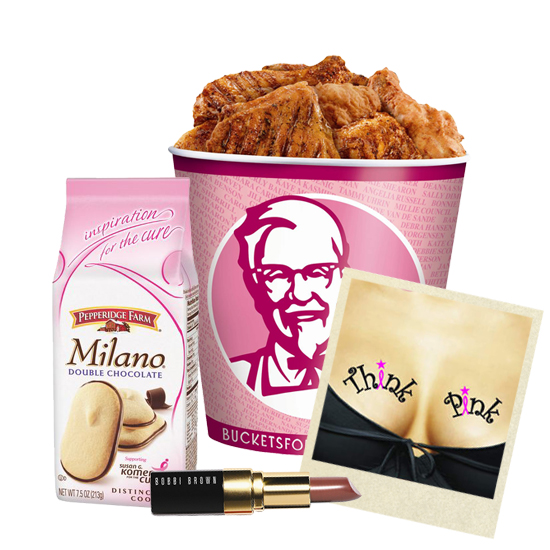{Charity} Have you been Pinkwashed?
When it comes to “shopping for a cure,” the leading philanthropy watchdog group says: “Buyer Beware!”
October is breast cancer month, and that means it time for . . . a tsunami of pink products. We’ve seen knee socks and nail jewels, lipstick and Milano cookies, fried chicken and even temporary tattoos, all claiming to “support the fight against breast cancer.”
But what does that really mean? How are these products helping to stop breast cancer? And, if millions of products are selling every year, why can’t a doctor at one of the nation’s leading research facilities, The Cleveland Clinic, find enough money to fund trials for a promising new breast cancer vaccine?
We spoke to Laurie Styron an analyst at The American Institute of Philanthropy, a national charity watchdog group that rates charities from A to F in order to help consumers make the best decisions about where to send their money.
Laurie says there are several troubling aspects to this “pink product” craze.
“There’s no way to find out exactly how much a company is giving to the charity,” she says. “They don’t have to tell the consumer and they can be very vague, as in ‘a portion of the proceeds go to fighting breast cancer.’” There’s no definition of what “proceeds” means. “So, for example, if Walmart is advertising a $20 pink water bottle made by ABC company, and saying that ABC company is giving 10 percent of the proceeds to charity, most people assume that means 10 percent of $20.” But, says, Laurie, that’s rarely the case. “Proceeds” likely refers to the manufacturer’s price, which the consumer has no way of knowing. And it may be referring to “net profit” rather than revenue.
So, ABC company can end up giving a tiny percentage. Or even worse, they can give zero percent, and the entire promotion can slip by under the guide of “breast cancer awareness”– another issue that drives Laurie crazy. “A lot of money is wasted each year on expensive ‘awareness’ campaigns that are no longer necessary for a cause that people are so broadly aware of, like breast cancer. I will donate $50 to any charity that can find me 10 people who aren’t ‘aware’ of breast cancer.”
Also, Laurie points out, the donation is often capped. So a company might say, “$30,000 of the profits of this pink item go to charity. But what if they sell 8 million dollars worth?”
So what’s an FOF to do, if, in Laurie’s words “your deep motivation is to channel as much money as you possibly can to researching and finding a cure?”
Find a breast cancer charity that spends a high percentage of its expenses on funding research and give to them directly. “There is one organization called Breast Cancer Research Foundation that gets our highest rating–an A+. They spend only $5 to raise $100 that goes directly to the cause.”
If you’re tempted to buy a product with an adorable pink ribbon, think for a moment about what percentage of your money is actually going to charity after you account for the wholesale price, the marketing costs, the advertising, etc. “You may want to just donate $20 to Susan B. Komen rather an buying a $20 mug for which only 20 cents on the dollar ends up going to research a cure,” says Laurie.


